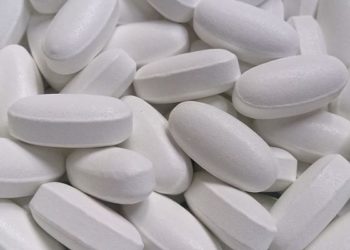Early tube feeding unable to reduce infections in pancreatitis [PYTHON trial]
1. Among patients with acute pancreatitis, there was no significant difference in infections or 6-month mortality between the early tube feeding group compared to the delayed oral diet group.
2. Patients in the oral diet group had a significantly decreased amount of time before full tolerance of oral diet compared to the early nasoenteric group.
Evidence Rating Level: 1 (Excellent)
Study Rundown: Associated with a mortality rate as high as 15%, infected pancreatic necrosis is a dreaded complication of acute pancreatitis, thought to be caused by translocation of gut microbia in the context of intestinal dysmotility and bacterial overgrowth. Many nutritional guidelines recommend early enteric feeding with nasoenteric tube in acute pancreatitis, with the belief that this intervention stimulates gut motility and prevents infection. However, the evidence for these guidelines rests on relatively small randomized controlled studies and non-randomized studies.
In the Pancreatitis, Very Early Compared with Selective Delayed Start of Enteral Feeding (PYTHON) trial, 208 patients diagnosed with severe acute pancreatitis were randomized to receive early enteral feeding through nasojejunal tube within 24 hours after randomization or a delayed oral diet at 72 hours after presentation, with the option of switching to nasoenteric feeding if oral diet was not tolerated. There was no significant difference between groups in terms of the primary outcome, a composite of major infection including infected pancreatic necrosis, bacteremia, or pneumonia, and mortality at 6 months; there was no significant difference in any of these outcomes considered separately. The incidence of gastrointestinal events including nausea, vomiting, aspiration, ileus, or diarrha was high, but did not differ between groups. As expected, significantly fewer nasoenteric tubes were placed in the oral diet group compared to the early intervention group. The oral diet group achieved full tolerance of an oral diet significantly faster than the early feeding group.
The strengths of the study include the fact that it is the largest randomized controlled trial to date rigorously addressing nutrition interventions in the treatment of acute pancreatitis. However, the wide confidence intervals on the primary outcome measure suggest that a larger study may be necessary to detect a difference between the groups. In all, the results suggest that ICU and nutrition guidelines that recommend early nasoenteric tube feedings in patients with acute pancreatitis should be re-examined.
Click to read the study, published today in NEJM
Relevant Reading: Timing and impact of infections in acute pancreatitis
In-Depth [randomized controlled trial]: This randomized controlled study examined two competing strategies for the nutritional management of severe acute pancreatitis: early enteral feeding through nasojejunal tube or a delayed oral diet. Inclusion criteria included a clinical diagnosis of acute pancreatitis and an Acute Physiology and Chronic Health Evaluation II (APACHE-II) score of 8 or higher, an Imrie or modified Glasgow score of 3 or higher, or a serum C-reactive protein level of more than 150 g per liter. A total of 208 patients were randomized in a 1:1 ratio to either nasoenteric tube placement within 24 hours after randomization (early group) or to an oral diet initiated 72 hours after presentation (on-demand group), with the option of starting tube feeding if the oral diet was not tolerated.
The primary endpoint was a composite of major infection (infected pancreatic necrosis, bacteremia, or pneumonia) or death during 6 months of follow-up. There was no significant difference between groups in the primary outcome (30% in the early group versus 27% in the on-demand group; risk ratio, 1.07; 95% CI, 0.79 to 1.44; P=0.76). Patients randomized to the on-demand group reached full tolerance of an oral diet faster than the early group (median 6 days versus 9 days, P=0.001). As expected, there were significantly fewer nasoenteric tube placements in the on-demand group versus the early group (57 vs. 145, P<0.001).
More from this author: Mepolizumab reduces exacerbations in severe eosinophilic asthma, Long-acting, reversible contraceptive methods linked to lower teen pregnancy rates, Extraordinary response, and resistance, to everolimus in thyroid cancer pinned to mutations, Triple-combo chemotherapy improves survival for metastatic colon cancer [TRIBE study], Double-unit cord-blood transplantation does not aid survival in children with hematologic malignancy
Image: CC/Wiki
©2014 2 Minute Medicine, Inc. All rights reserved. No works may be reproduced without expressed written consent from 2 Minute Medicine, Inc. No article should be construed as medical advice and is not intended as such by the authors, editors, staff or by 2 Minute Medicine, Inc.







